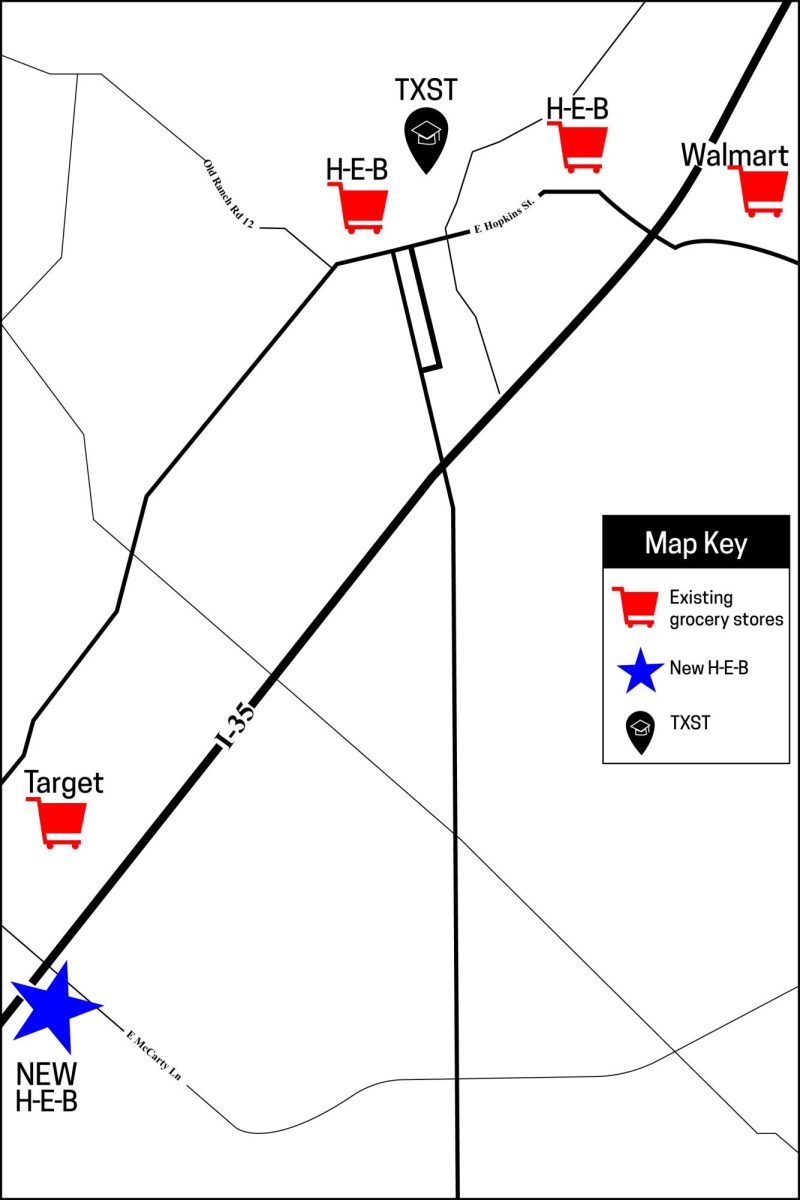A Texas State professor joined a group of researchers from The University of Texas Health Science Center at San Antonio to conduct research on a neurological disease not previously been studied in depth.
Larry Price, professor of psychometrics and statistics at Texas State, began his research June 2018 on the project that, when published, would be titled “A Neural Signature for Metabolic Syndrome.” For several years, Price had a working relationship with the Research Imaging Institute (RII).
It was at the research institute Price was approached by Peter Fox, director of Research Imaging Institute, and Ethian Kotkowski, Ph.D. student at UTHSCSA, about a project Kotkowski was developing.
The project is centered around metabolic syndrome, a neurological disease reportedly affecting about 23% of adults each year. The syndrome’s presence can result in a higher risk of cardiovascular disease.
Metabolic syndrome occurs when a person undergoes multiple problems with their metabolism at once, which places individuals at having higher risk of experiencing cardiovascular disease, stroke, developing diabetes or Alzheimer’s disease. The risk factors of metabolic syndrome range from obesity to uncontrollable genetic elements and can be compounded by physical inactivity.
Kotkowski, initiator of the project, said the goal was to look at whether there were neurological differences in the brain between people who have a propensity of having metabolic syndrome and people who do not. According to Kotkowski, people of Hispanic origin have a higher chance of becoming diagnosed with metabolic syndrome.
“In scientific literature, there is a lot of information about the predisposition of Alzheimer’s disease if you have type two diabetes,” Kotkowski said. “But what we wanted to know is what exactly is happening in the brain of the people who have metabolic syndrome.”
The project consisted of gathering MRI scans from over 200 Mexican-Americans in the San Antonio area and dividing individuals up between those who were healthy and those who have metabolic syndrome to see a difference in brain structure.
The hypothesis became those who had metabolic syndrome would have a similar brain structure to those who have diabetes and Alzheimer’s. However, the brain patterns differed in that those who have metabolic syndrome have more atrophy in the posterior cerebellum, which is responsible for coordination.
However, researchers did find there is some degeneration of gray matter—the section of the brain responsible for thought process—in individuals who have metabolic syndrome.
Price, whose main contribution to the project was his expertise in statistical analysis, said the study can help clinical practitioners become more informed about the effects metabolic syndrome has on patients.
“No one has ever looked at brain activity in different regions of the brain related to how metabolic syndrome causes brain atrophy,” Price said. “We were able to document and verify how people with metabolic syndrome characteristics have different brain lifespan patterns.”
The research project, as well as other projects conducted by both faculty and students, help provide Texas State additional visibility and enable the institution to grow closer to its goal of obtaining research university status.
Obtaining this feat would allow Texas State the benefit of acquiring National Research University Funding from the state, as well as become a nationally recognized university that pilots influential research projects. Currently, Texas State’s national research university classification, under the Carnegie Classification of Institutions of Higher Education, is a level two.
Mike Blanda, associate vice president for research and federal relations at Texas State, said the goal is to eventually get Texas State to a level one classification, which would be the highest tier.
“There are many advantages (of making Texas State a level one classification) for students,” Blanda said. “It helps enhance their learning environment and opportunities by being able to engage with world class researchers, and it certainly strengthens students’ educational experience.”
“A Neural Signature for Metabolic Syndrome,” a study co-authored by Price, Kotkowski, Fox and Mickel Fox, was published August 15 in scientific journal “Human Brain Mapping.”
Categories:
Texas State professor joins research project to do in depth study on neurological disease
September 3, 2019
Group picture of three of the co authors of “A Neural Signature for Metabolic Syndrome.” Photo credit: Photo courtesy of Dr. Eithan Kotkowski
0
Donate to The University Star
Your donation will support the student journalists of Texas State University. Your contribution will allow us to purchase equipment and cover our annual website hosting costs.
More to Discover














